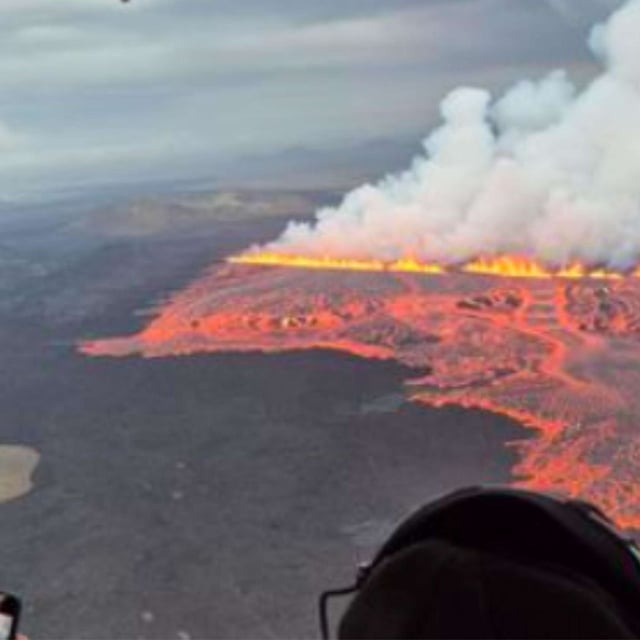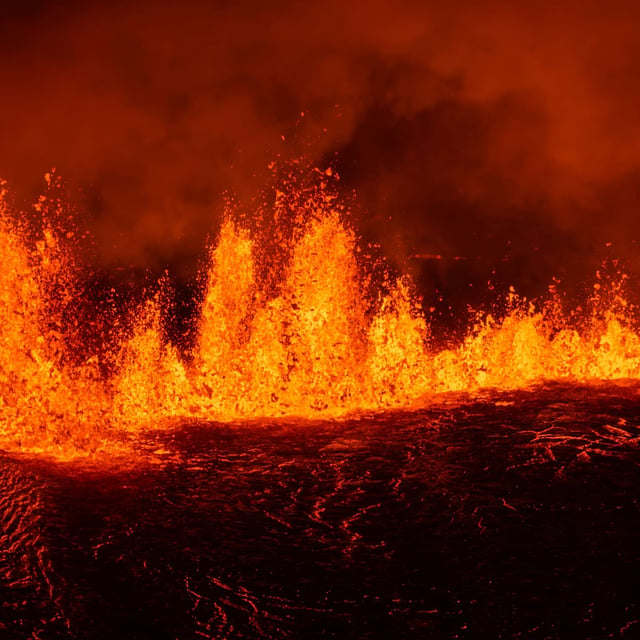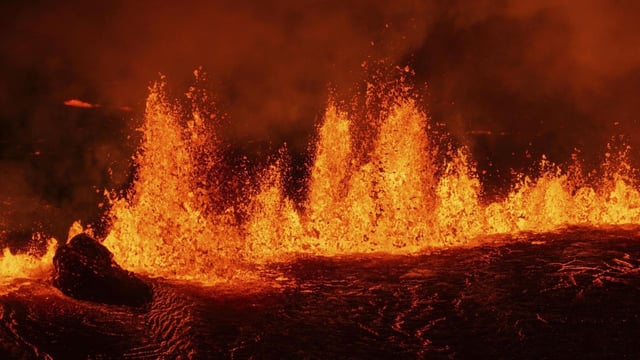Overview
- The eruption followed an intense seismic swarm that began just hours earlier, prompting the Icelandic Meteorological Office to issue an alert.
- Molten rock surfaced through a 700 to 1,000 meter-long fissure, producing lava flows visible on live camera feeds.
- This is the twelfth eruption on the Reykjanes Peninsula since its reactivation in spring 2021 and the ninth since late 2023.
- Authorities reported no anticipated impact on international flights and confirmed that Keflavik Airport will remain fully operational.
- Local officials advised residents to keep windows closed and use air quality monitors to guard against hazardous volcanic emissions.


